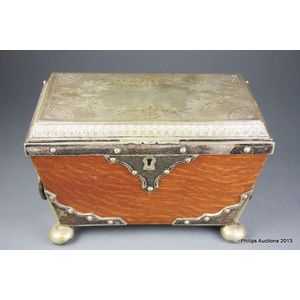Art Deco Wrought Iron Console Table with Marble Top
You must be a subscriber, and be logged in to view price and dealer details.
Subscribe Now to view actual auction price for this item
When you subscribe, you have the option of setting the currency in which to display prices to $Au, $US, $NZ or Stg.
- Provenance - A term used to describe the provable history of an antique or work of art, and thus an additional aid to verifying its authenticity. Provenance can have an inflating effect on the price of an item, particularly if the provenance relates to the early settlement of Australia, a famous person, or royalty. Less significant are previous sales of the item through an auction house or dealer.
- Art Deco Period - The Art Deco period was a cultural movement that emerged in the 1920s and 1930s, and was characterized by its emphasis on modernism, luxury, and elegance. The name "Art Deco" comes from the Exposition Internationale des Arts Décoratifs et Industriels Modernes, a large exhibition held in Paris in 1925 that showcased the latest trends in decorative arts.
Art Deco was a reaction against the ornate and elaborate styles of the previous era, and reflected a new modern sensibility. It was characterized by streamlined, geometric shapes, bright colours, and the use of new materials such as chrome, glass, and Bakelite. Art Deco designers sought to create a sense of luxury and sophistication, often incorporating expensive materials such as ivory, marble, and rare woods.
Art Deco had a significant impact on a wide range of artistic fields, including architecture, fashion, graphic design, and interior design. Some of the most iconic examples of Art Deco architecture include the Empire State Building in New York City, the Hoover Building in London, and the Palais de Chaillot in Paris.
The Art Deco period came to an end in the 1940s, as World War II and changing cultural trends led to a shift in artistic styles. However, Art Deco remains an important influence on design and art, and continues to be celebrated for its modernist sensibility and glamorous aesthetic.
This item has been included into following indexes:
Visually similar items

A Louis Vuitton Damier canvas trunk, circa 1880, with wood strapping, mounted with brass and metal handles to the sides, LV monogrammed studs, the interior fitted with struts, 90 cm width, 57.5 depth, 69 high

An Intricately carved Chinese camphor wood chest with two tray inserts & Cloud clasp, has a taupe coloured lacquer wash cm, length 94 cm, width 44 x height 50 cm

A late Victorian silver plate-mounted oak tea caddy, late 19th century, of sarcophagus form with a hinged top enclosing two compartments with covers, the metal cover engraved with bamboo and foliate designs, the body with decoratively shaped mounts through

Brass bound Kuwaiti lift top trunk with ornate brass panels & decoration, 110 cm long, 49 cm deep, 47 cm high
